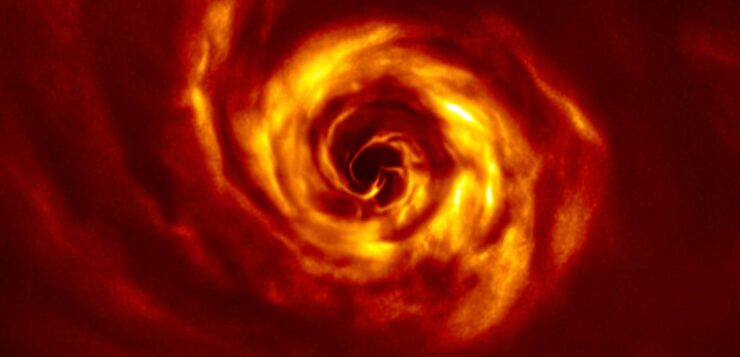Astronomers said the dramatic scene could help scientists better understand how new planets come to exist around stars.
By Denise Chow NBC news
An image of a mesmerizing cosmic spiral, twisting and swirling around a galactic maw, may be the first direct evidence of the birth of a planet ever captured by humanity.
The European Southern Observatory released a picture Wednesday of what astronomers believe shows the process of cosmic matter in the midst of a gravitational tipping point, collapsing into a new world around a nearby star.
Astronomers said the dramatic scene offers a rare glimpse into the formation of a baby planet, which could help scientists better understand how new planets come to exist around stars.
“Thousands of exoplanets have been identified so far, but little is known about how they form,” Anthony Boccaletti, an astronomer at the Observatoire de Paris in France and the lead author of a new study detailing the discovery, said in a statement.
Planets are thought to form out of the massive disks of gas and dust that surround young stars. As tiny specks of dust circle the star and collide with each other, some material starts to fuse together, much like how rolling a snowball through more snow will eventually yield a bigger snowball. After billions of years, these clumps of material eventually become massive enough that the force of gravity shapes them into planets.
The new image peers into the disk of material around a young star known as AB Aurigae, which is 520 light-years away from Earth in the constellation of Auriga. Amid the hypnotic spiral arms is a “twist,” visible in the photo as a bright yellow region in the center that is thought to be a sign of a baby planet being born, according to Emmanuel Di Folco, a researcher at the Astrophysics Laboratory of Bordeaux in France, who participated in the study.
When new planets form, these clumps of material create wave-like perturbations in the gas- and dust-filled disk around a star, “somewhat like the wake of a boat on a lake,” Di Folco said.
The bright region at the center of the new image is thought to be evidence of such a disturbance, which was predicted in models of planetary birth.
“The twist is expected from some theoretical models of planet formation,” said Anne Dutrey, an astronomer at the Astrophysics Laboratory of Bordeaux and co-author of the study published Wednesday in the journal Astronomy & Astrophysics. “It corresponds to the connection of two spirals — one winding inwards of the planet’s orbit, the other expanding outwards — which join at the planet location.”
The new observations of the baby planet were made in 2019 and early 2020 by the European Southern Observatory’s Very Large Telescope in the Atacama Desert in northern Chile. The research team, made up of astronomers from France, Taiwan, the U.S. and Belgium, said the images are the deepest observations of the AB Aurigae system made to date.





